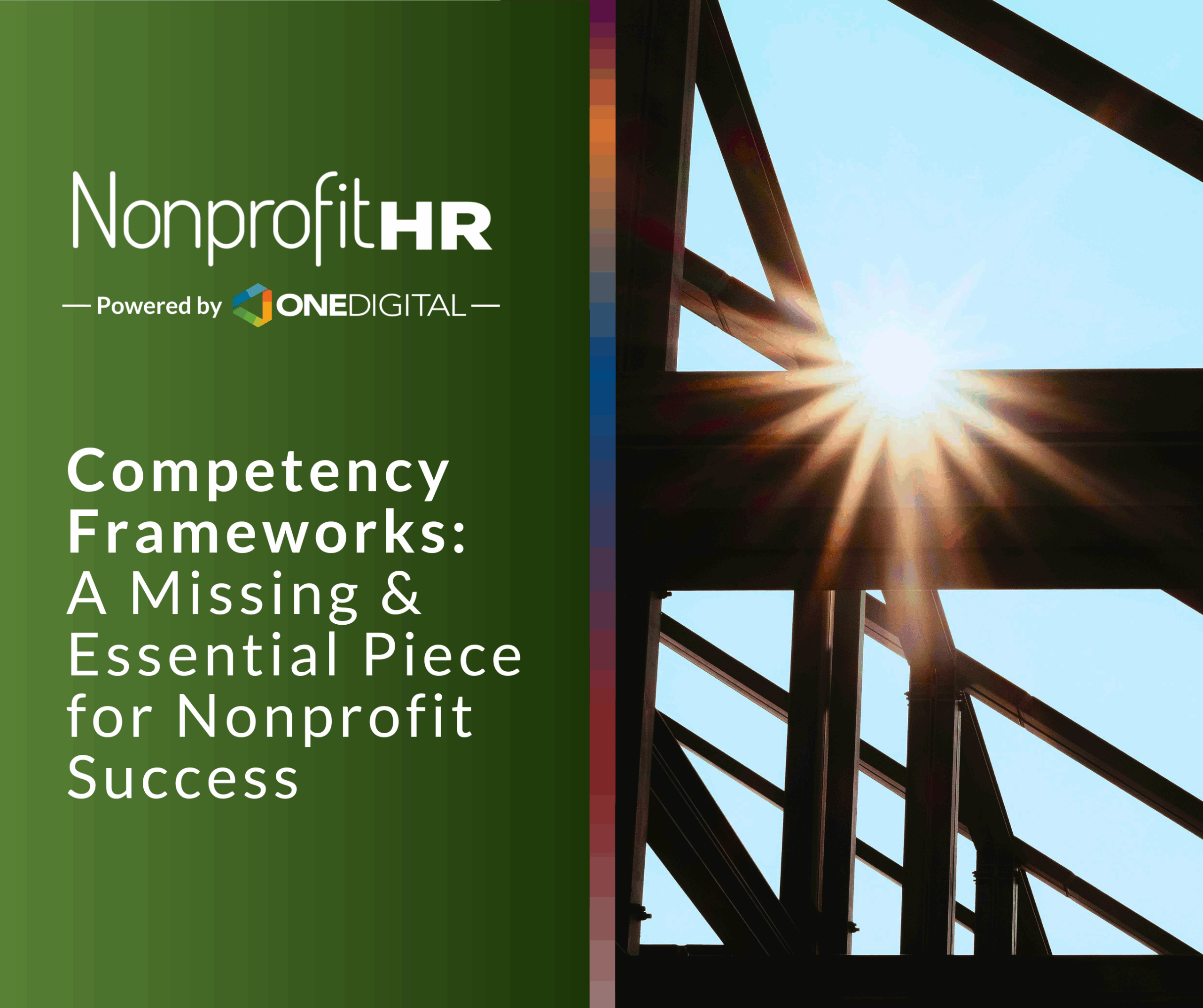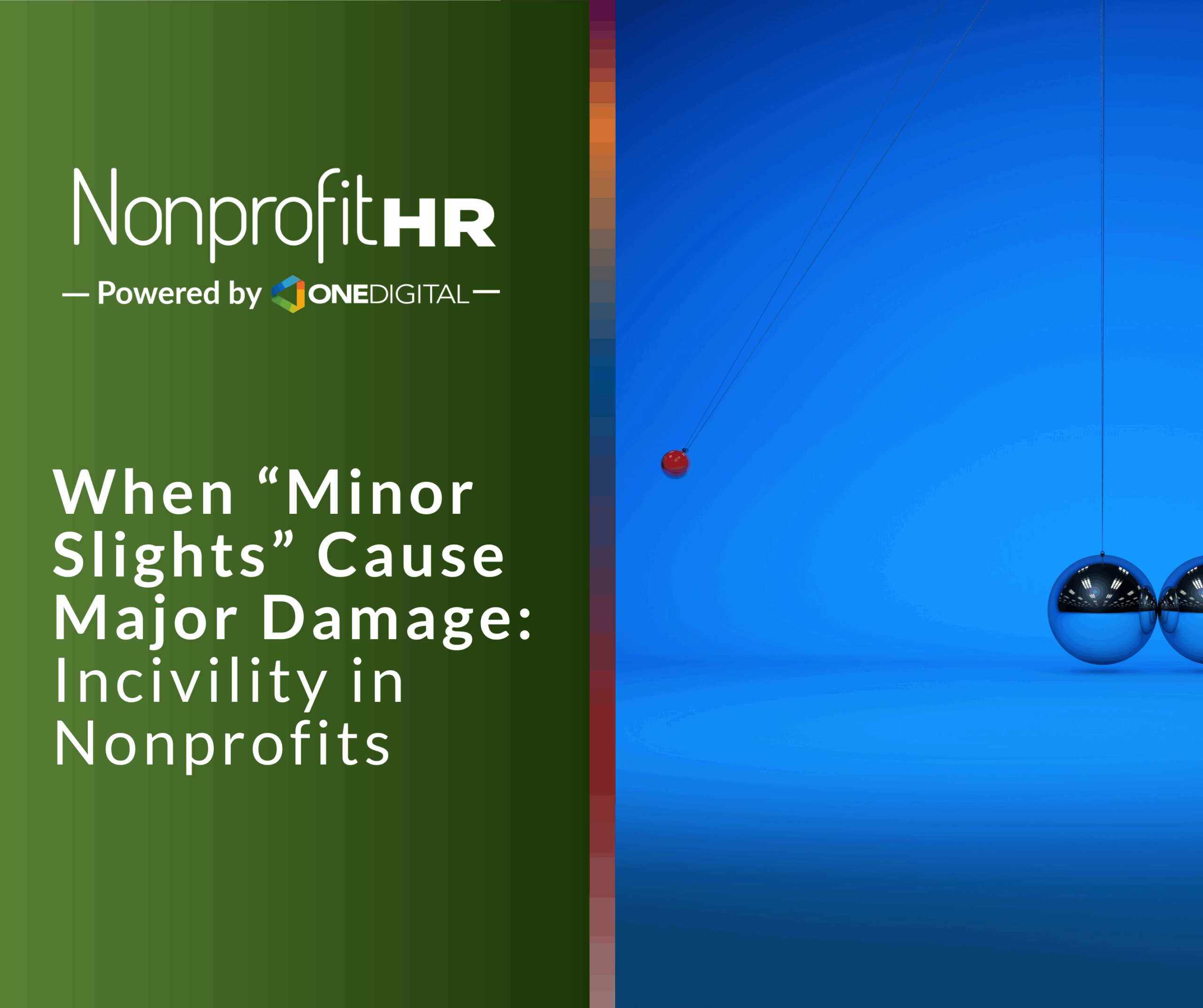WTOP: 5 ways nonprofits can…
The blurred lines increasing between home and work have decisively shifted the workplace mentality of “leave it at the door.” It is now more difficult for individuals to compartmentalize their lives and, as a result, employees are bringing their full selves to work — including the trauma they have experienced, both personally and professionally.
If organizations and the people leading them don’t know how to recognize trauma or how it may already be showing up in their workplace, it can magnify harmful effects on staff well-being and overall mission impact. Cultivating a trauma-informed workplace is about creating an environment of trust, psychological safety and ongoing support to ensure your people can live and work at their best.
The Three T’s: Trauma, Triggers & Trust
According to the Substance Abuse and Mental Health Services Administration in the U.S. Department of Health and Human Services (SAMHSA), individual trauma is defined as the “results from an event, series of events, or set of circumstances that is experienced by an individual as physically or emotionally harmful or life threatening and that has lasting adverse effects on the individual’s functioning and mental, physical, social, emotional, or spiritual well-being.”
As a result of a traumatic experience, there may be certain stimuli that evoke a memory of that experience for an individual. This is referred to as a trigger. When an individual is triggered, they might experience fear, shock, anxiety or depression. On the surface these states may manifest as certain behaviors; for example, heightened stress, lower productivity, unexplained absenteeism or isolation. If these symptoms arise within the workplace, failure on the part of the organization to recognize and support staff will diminish trust across the organization. And ultimately, it is the erosion of trust that leads to the erosion of culture.
This is why, post-pandemic, it is more important than ever for organizations to migrate toward becoming a trauma-informed work environment. The first step to doing this is building the awareness and practice of acknowledging that trauma exists. Trauma can show up (i.e. be triggered) differently for everyone. And since the symptoms of trauma are unique to the individual, it is imperative for staff at all levels to understand if they see subtle changes in employees and to be inquisitive if a traumatic experience might be driving that change.
However, some organizational cultures are not fertile ground for spotting trauma and may potentially be contributing to further harm. These are the cultures where retraumatization most often occurs. And the effects on employees will show up in an organization’s engagement scores, as well as their rates of retention and turnover, and in how employees speak about the organization on external job boards and social media. In such cases, it may be beneficial to seek additional outside support to move toward becoming a trauma-informed work environment.
The Impact of Leaders
Organizational leaders play pivotal roles in fostering a culture that builds awareness of the effects of trauma and embraces well-being. It is necessary for leaders to operate from a perspective of compassion as well as lean into being creative and proactive in individual support for employees working through trauma. When noticing a behavior shift, leaders are called to take action, striving to prevent outcomes that may erode trust and to anticipate needs.
Though people leave people, not organizations, and sometimes leaders act out of trauma. The role leadership styles can play in the prevalence or impact of trauma in the workplace should not be overlooked. Leaders may not be the cause of trauma themselves, but how are they creating a psychologically safe work environment?
If this is the case with leadership in an organization, then executive coaching can be a helpful tool. While coaches are not therapists, they will help dig into the background of the leader, the reasons behind their management style and then create a plan to address it. Once leaders have increased personal awareness, they are better able to observe how others typically show up and why that is—and thus, are better equipped to recognize when a change occurs in those they manage.
In essence, the recognition on the part of a leader, of a human managing humans, is two-fold: recognizing as a person that trauma exists and we all carry it, then recognizing as a people manager how it is manifesting in the workplace. And then finally, using this knowledge to take action and address it.
It is also important to note that organizational decisions can play a role in creating and triggering trauma in the work environment. This includes decisions such as mergers, acquisitions, buy-outs, layoffs, strikes or terminations. These can all create trauma for employees and/or can heighten any trauma that an employee may already be experiencing outside of the workplace. If an employee is already under stress as a result of a personal trauma, serious organizational decisions increase the risk of compounding their symptoms or potentially causing retraumatization.
Preventative Steps to Minimize Potential for Trauma in the Workplace
In the same way organizations utilize a business continuity plan, adopting a trauma-informed approach will help your organization effectively understand, prepare for and navigate trauma in the workplace. This type of planning will ensure the long-term support of employees, rather than simply alleviating any immediate impediments to them resuming work.
The framework for a trauma-informed approach, as advised by SAMHSA, is about recognizing trauma and understanding the potential threats, recovery methods and a comprehensive response. In instances when it falls outside of organizational control, a plan will help outline a clear process for how leadership needs to respond in the given situation and build a path forward to prevent retraumatization and deliver the support their people need. Additionally, it will better allow the organization to consider and be inclusive of the different needs its people have and share.
In preparing this approach, a primary component is communication processes with staff when, for example, organizational decisions are made. Leaders need to be thoughtful about how and when those decisions are communicated, ensuring they are crafted with care and concern for employees to minimize potential impact. If it is a sensitive decision, one that may affect a great percentage of your workforce, consider what resources would be beneficial to couple with these communications. Are there other resources that would be beneficial to have in-house or on-site, such as an EAP counselor? Organizations can reduce the risk of trauma by being proactive and preparing a strategy to anticipate potential impact on employees.
Offering Support in a Productive and Sustainable Way
Human Resources
HR works to establish lines of trust between leadership and staff, and can deploy practical solutions to support the organization, leaders and employees. Those who recognize employees experiencing trauma can work to provide a flexible schedule, help readjust work expectations and reestablish goals, as well as shift workloads. Since HR professionals are not therapists, they should also maintain healthy boundaries by being caring, approachable and transparent about their range of responsibility. If you are an HR professional who recognizes trauma, reiterate to the employee the resources available, internally and externally, to support what they may need to work through it. Then, periodically check in to ensure individuals are continuing to receive the support they need.
Employees
Employees can play an essential role in supporting peers, building shared community and keeping the organization abreast of staff well-being. It is important to note that any employee who recognizes a change in a colleague is not obligated to deal with that person’s trauma if they are not a trauma expert. While well-intentioned, this may cause more harm than good. In all cases, while it may feel uncomfortable to get involved, employees should not leave behavior to linger if they notice a change in their colleague. Either reaching out to that staff member or making this change known to leadership are ways to guide them toward resources that are available to them, both inside and outside of the organization.
As an extension of adopting a trauma-informed approach, it is essential to foster an organizational culture that at all levels supports employee well-being. This is a trauma-informed culture, and is one where everyone in the organization has a level of awareness for how trauma shows up and helps people navigate toward resources in the organization and in the community. Ultimately, it is a shared responsibility and accountability, which is what will build a psychologically safe work environment where staff are encouraged and empowered to support each other as they support the organization’s mission.





























